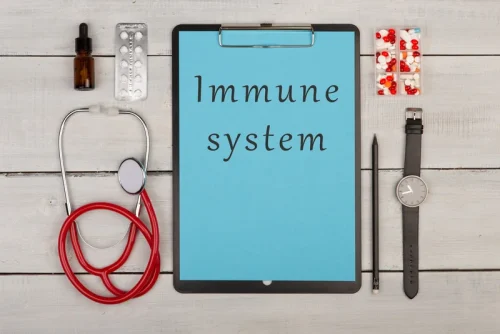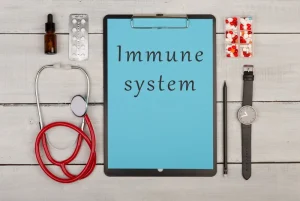Cannabinoid Hyperemesis Syndrome CHS: Causes, Symptoms, Treatment

Caution should be made against the overprescription of lorazepam, as it can cause physical and/or psychological dependence especially in CHS patients who are vulnerable to substance abuse. Ironically, one of the potential complications of long-term cannabis use is a condition called cannabis hyperemesis syndrome (CHS). Serotonin antagonism in the gastrointestinal tract from medications such as ondansetron, dolasetron, and granisetron likewise have varying levels of efficacy. Opioids, while often prescribed for the patient’s debilitating abdominal pain, are not appropriate for CHS, as they may, in fact, worsen nausea and vomiting. Cannabinoid hyperemesis syndrome (CHS) is a very unpleasant — and potentially dangerous — complication of long-term marijuana use. Because of this possible complication, it’s important to use caution with marijuana and other cannabis products.
- Clinical pharmacists should have heightened awareness when patients present to the hospital with intractable nausea and vomiting and report relief with hot showering.
- The only way to stop CHS and its symptoms is to completely quit using cannabis.
- The report’s bottom line is that the federal government must “stop ceding its authority to control these drugs.” Though the drug is still illegal at the federal level, the government has taken a step back.
What Are the Health Complications of CHS?
It’s important to be honest about your marijuana use if you have symptoms of cannabinoid hyperemesis syndrome CHS. Without knowing this background, providers often misdiagnose CHS as other conditions, like cyclic vomiting syndrome (CVS). One study found that 32.9% of self-reported frequent marijuana users who came to an emergency department for care met the criteria for CHS.
- It’s not clear what percentage of all heavy marijuana users have experienced CHS.
- If you think you have CHS or cannabis use disorder, talk to a healthcare provider.
- In older patients, especially those with hypertension, cardiovascular illnesses such as aortic pathology and atypical coronary artery syndromes may present as vague abdominal pain, nausea, and vomiting.
- While any amount of long-term cannabis use can lead to CHS, daily cannabis use seems to be more likely to cause CHS than using it less often.
Why might CHS be on the rise?
Additional pharmacological research is needed regarding the pro-emetic effects of additional cannabinoids and their metabolites. Another proposed explanation is that in susceptible individuals the pro-emetic effect of cannabis on the gut (e.g. delayed gastric emptying) overrides its anti-emetic CNS properties 62. This hypothesis is supported by the demonstration of delayed gastric emptying on gastric emptying scintigraphy in some cases 6,55,62. Further research is required to investigate the gastrointestinal physiology in these patients during both the acute attacks of hyperemesis and between episodes. There exists no epidemiological data regarding the incidence and prevalence of CHS among chronic marijuana users. The syndrome is likely underreported given its recent recognition 74,75.
How Common Is CHS?
As more states make recreational use of cannabis legal, it is thought that this problem will become more common. After stopping cannabis use, symptoms typically start to disappear within one to two days though individual results can vary. However, symptoms almost always return if you resume using marijuana. Since its symptoms are easily confused with other conditions, it can take about one to two years before people who seek medical help with CHS get an accurate diagnosis. Cannabinoid hyperemesis syndrome (CHS) is a rare problem that causes constant vomiting. The pain is usually around the belly button and can get better with hot shower/baths.
Can CBD products without THC cause cannabis hyperemesis syndrome?

Cannabis legalization and acceptance have brought us to a brave new world, in the sense of how William Shakespeare first coined the phrase—a world of naive innocence, rather than a hoped-for utopia. The only way to prevent CHS is to avoid using any form of marijuana. It’s still possible to develop CHS if you use cannabis for many years without having any problems. THC and other chemicals in cannabis also bind to molecules in your digestive tract.

Anandamide and 2-AG are released locally on demand by neurons, are present in small quantities, and undergo rapid inactivation 8. Endocannabinoids are thought to act as either neuromodulators or neurotransmitters https://ecosoberhouse.com/article/abuse-in-older-adults-a-growing-threat/ 11. Anandamide and 2-AG possess similar biochemical structures, but each has a distinct pathway for biosynthesis and degradation.
What is the treatment for cannabinoid hyperemesis treatment?
Diagnosis begins with a thorough physical examination and history for all patients presenting with nausea, vomiting, and abdominal pain. This will help to rule out life-threatening causes or diagnoses that confer significant potential morbidity to the patient or to establish the presumptive diagnosis of CHS. History taking should include an inquiry about the patient’s past and present medical illness, medication use, illicit drug use, and therapeutic or recreational use of cannabis. Denial of cannabis use by the patient is typically the biggest stumbling block for clinicians in making a proper diagnosis of CHS.
Shortcomings in our knowledge of CHS and areas for future research
- Symptoms of CHS typically come on several years after the start of chronic marijuana use.
- Hot showers improve symptoms of nausea and vomiting 6,52–56,60,62,68,71, abdominal pain 6,56,71, and decreased appetite 68 during the hyperemetic phase.
- However, doctors exercise caution when prescribing lorazepam because it is a controlled substance with the potential for abuse and addiction.
- The precise mechanism by which hot bathing produces a rapid reduction in the symptoms of CHS is unknown.
- But too many of them may increase your risk for dehydration due to sweating.
CHS is a newly identified condition, so doctors currently know little about it. No clinical guidelines exist, so they must rely on published case reports to treat people with CHS. However, doctors exercise caution when prescribing lorazepam because it is a controlled substance with the potential for abuse and addiction. The use of lorazepam for CHS is also off-label, so a person’s doctor would need to make them aware of this fact.
As people with CHS often only consult their doctors during the hyperemesis stage, there is a lack of knowledge regarding the treatment of people during the prodromal stage. Clinical guidelines for the diagnosis of CHS do not currently exist. Some researchers have published their findings from their personal experience with the condition in clinical journals. In CHS, receptors that bind to the different components of marijuana can become altered. Some receptors may become more active, while others can shut down. On the basis that only a small number of regular and long term users of marijuana develop CHS, some researchers suggest that genetics might play a role.

Etiology of CHS

While marijuana seems to bring on nausea in the stomach, in the brain it usually has opposite effect. When cannabinoids bind with brain receptors, they tend to prevent nausea and vomiting. Experts think that when you first smoke weed, your brain signals are more important, but after repeated use of the drug, the brain receptors may no longer respond to marijuana in the same way, causing more nausea and vomiting. When you use marijuana for many years, it can start to slowly change how the receptors in your body respond to the cannabinoid chemicals. For example, the drug affects the receptors in the esophageal sphincter, the tight band of muscle that opens and closes to let food go from your throat to your stomach.
